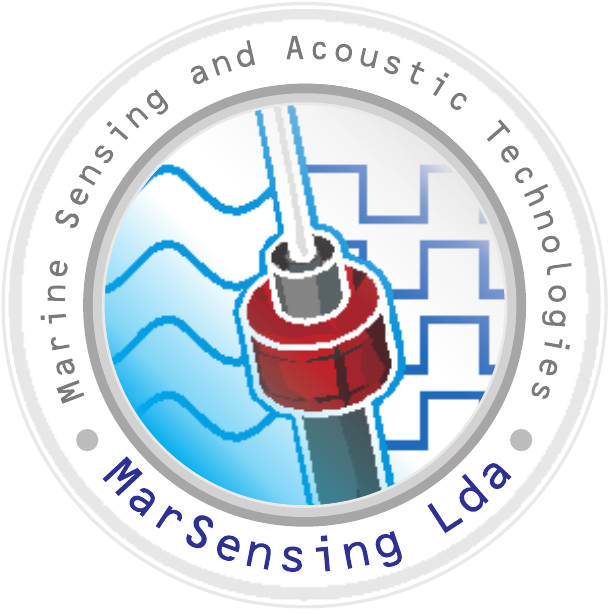|
You are not Logged in! Log in to check your messages. |

|
|
Check todays hot topics |
Web2Project Sign in
Project 2DeepScape, Plan of Work
The proposed plan of work to be followed under 2DeepScape is as follows:
Task 1: System specification
Start date: 2-Jan-2018
End date: 1-Apr-2018
Task description and Expected results: This is the kicking off task (3M). Team will meet several times to define project specifications and constraints, like dimensions of prototype, autonomy, energy constraints, hydrophones bandwidth as well as coverage area, considering the complementary disciplinary areas involved. At the end of this task a preliminary design of the entire system and its specifications will be reported. This will be the support for the acquisition of the materials and components, as well as to the prototype manufacturing process.
Expected outcomes: Specifications/guidance lines; Acquisition of material/components. Recruiting of the 3 grant researchers. Preliminary design of the entire system.
Members of the research team in this task: Alexandre Ferreira da Silva, António Silva, Cristiano Soares, Eduardo Pereira, Fred Zabel, Luis Gonçalves, Marcos Martins, Pedro Gomes, Sérgio Jesus and Tiago Miranda;
Task 2: Development of hydrophones
Start date: 2-Feb-2018
End date: 1-Nov-2018
Task description and Expected results: The main objective of this task is to develop an hydrophone to operate up to 4000 meters deep and up to 200 kHz (200 kHz are expected, but specifications from task 1 can define different bandwidth). Regarding the harsh conditions of deep sea, mostly because of the high pressure that the hydrophone will be subjected to, a PVDF piezoelectric material was selected to operate in the hydrostatic mode. The desirable hydrophone properties are: broad and flat frequency response; high signaltonoise ratio; low electrical impedance; low vibration noise; lowflow noise; high static and dynamic pressure capabilities; high uniformity; low aging; low cost, high reliability and long life. In order to reach the best performance for the intended application it is necessary to find a wellbalanced compromise between all these properties. Some commercial available PVDF films are commercially available. However, if properties or dimensions are found to be inadequate, these films can be fabricated by spin coating techniques and its polarization, and then coated by metallic electrodes, has previous experience in the team. If this solution is found to be the best option, the Development of hydrophones task could be delayed 12 months, without delaying the whole project, since prototype can include commercial PVDF films. Subtask list: Hydrophone design and dimensions; Simulation; Development of a pre charge amplifier; Implementation; Test in the 17 bar pressure chamber; Analysis of results and optimization process; Test in up to 400 bar pressure chamber; Analysis of results.
Expected outcomes: Implementation of a deep sea directional hydrophone; Publish the results in conferences and Journals.
Members of the research team in this task: (BI) Bolseiro de Investigação (Mestre) 1; António Silva; Luis Gonçalves; Marcos Martins;
Task 3: Pressure tolerant electronics
Start date: 2-Feb-2018
End date: 1-Nov-2018
Task description and Expected results: Considering specifications of electronic system, defined in task 1, electronics components will be selected, considering compatibility with deep sea pressures when available. Acquired components will be tested individually, in pressure chamber up to 400 bar (4000 m). When possible, solidstate electronic components in high level of integration will be prefered, since silicon chips are intrinsically pressure tolerant, despite tests not being typically realized in manufacturing processes. Alternatives for each not compatible component will be searched and tested, with special emphasis on capacitors, oscillators and batteries. These tests will report degradation of main properties of the components with pressure, and with pressure cycling. As example, is expected that the battery capacity decreases with pressure. However, if pressure tolerant alternatives were not found, as expected, as example, in complete OEM systems like GPS receiver and Iridium transceiver, the whole systems will be encapsulated in epoxy to support external pressures. As possible by components specifications, these encapsulation will be realized in vacuum, to avoid internal voids (bubbles) filled with air. After selections and test of components, the hardware and software will be developed to fulfil required tasks. Subtasks: Selection and individually pressure test of electronic components; Encapsulation and test of pressure nontolerant components; Development of hardware and software.
Expected outcomes: Report of pressure tests and list of pressure compatible components. Encapsulation of pressure nontolerant components and respective tests. Publish the results in conferences and Journals.
Members of the research team in this task: (BI) Bolseiro de Investigação (Lic. ou Bacharel) 1; (BI) Bolseiro de Investigação (Mestre) 2; Alexandre ferreira da Silva; Cristina Santos; Luis Gonçalves;
Task 4: Device integration and laboratory tests
Start date: 2-Apr-2018
End date: 1-Dec-2018
Task description and Expected results: This task will start with the design and the development of the testing systems and adaptation of existing equipments necessary to simulate the pressure and environmental conditions found in the deep sea at depths of up to 4000 m, the maximum known depth in ultradeep sea waters. In particular, the pressurized tank should allow the controlled variation of the pressure and of the temperature, as well as to allow the use of salted water as the testing fluid. Additionally, one of the faces of the pressurized tank will be preferably electrical isolator to allow transmission of RF signals and transparent for visual inspection. After defining the testing protocols and finalizing the testing system assemblage, single electronic, components, encapsulation materials and microsystem prototypes will be tested at increasing depths replicating the immersion steps which will be undertaken in open sea subsequently. The deformations imposed in the systems at high depths due to the high pressure may be the cause of malfunctioning and systems failure, therefore the monitoring of deformations may be essential to detect weaknesses and aid with the optimization of the systems. In this case, conventional deformation techniques may not work, therefore the use of less conventional and innovative contactless deformation measurement techniques are anticipated, such as Digital Image Correlation, in which the project team has extensive experience. Electrical components will be actively tested considering the measuring of particular properties variation with pressure, and aging due to pressure cycling. In this task, the structural parts of the whole microdevice will also be fabricated and tested, using 3D print of biodegradable materials and molded epoxies. Finally, buoyancy foams, ballast materials and releasing process will also be proposed and tested. Subtasks: Design and development of the testing systems and adaptation of existing equipments; Defining the testing protocols and testing of materials, electronic components and devices; Design, fabrication and test of the structural parts of the whole system, including buoyancy parts and ballast, as well as its release; Pressure tests on materials and devices; Integration of developed parts in a complete device; Pressure tests of prototypes.
Expected outcomes: Testing facilities for simulating deep sea pressure and environments of up to 4000m; Testing protocols and test results for deep sea tolerant electronics; Integration in complete devices and their validation in simulated conditions; Publish the results in conferences and Journals.
Members of the research team in this task: (BI) Bolseiro de Investigação (Lic. ou Bacharel) 1; (BI) Bolseiro de Investigação (Mestre) 1; (BI) Bolseiro de Investigação (Mestre) 2; Cristina Santos; Eduardo Pereira; Marcos Martins; Tiago Miranda;
Task 5: Results analysis and exploitation
Start date: 2-Jul-2018
End date: 1-Dec-2018
Task description and Expected results: This task will be dedicated to the analysis of the results obtained in task 5, mostly regarding two main aspects: verification of the capacity of the developed testing systems and adapted facilities, mostly the pressurized water tank, to reproduce the pressure and environmental conditions found in deep sea; considering the simulated conditions and a thorough revision of the current state of knowledge regarding the physical, chemical and environmental conditions found in the deep sea distinct ambients, a critical assessment of the degree of approximation reached by the developed facilities to these conditions will be carried out; considering that the experimental tests will be carried out in extremely severe conditions, redundant monitoring systems will be adopted to trace the deformations and other variables during testing of the prototypes. Any monitoring system that may be selected will be used in unprecedented extremely demanding conditions. As an example, deformations will be measured using both strain gages and a contactless method, the digital image correlation. The results obtained with each of these systems to monitor deformations will have to be critically analysed, isolated and combined, in order to verify the validity of the results obtained and possible sources of inaccuracy due to the extreme environment conditions. The analysis of results under these two different viewpoints will allow to extract significant information regarding the testing protocols and monitoring systems which should be selected when trying to replicate the deep sea environmental conditions in laboratory premises. Possibly proposals for recommendations and guidelines for testing protocols will originate from this task. Subtasks: Evaluation of the operability and accuracy of different monitoring systems commonly used to measure physical and mechanical variables, such as temperature, pressure, deformation, under the extremely demanding testing conditions considered; Assessment of the testing protocols and critical review of the existing protocols for this type of laboratory testing; Assessment of the degree of approximation reached by the testing facility developed with respect to the real conditions found in deep sea, considering the current state of knowledge and the available literature on the topic; Proposal of new recommendations and guidelines for laboratory testing of novel systems for deep sea applications.
Expected outcomes: Critical assessment of operability and accuracy of testing facilities for simulating deep sea pressure and environments of up to 4000m. New recommendations and guidelines for deep sea laboratory testing development of new monitoring systems for deep sea experimental testing in the laboratory premises. Publish the results in conferences and Journals.
Members of the research team in this task: (BI) Bolseiro de Investigação (Lic. ou Bacharel) 1; (BI) Bolseiro de Investigação (Mestre) 1; (BI) Bolseiro de Investigação (Mestre) 2; Eduardo Pereira; Luis Gonçalves; Marcos Martins; Pedro Gomes; Sérgio Jesus;
Task 6: Field test
Start date: 2-Nov-2018
End date: 31-Dec-2018
Task description and Expected results: The final goal of this project is to test one prototype in Azores deep sea. If the stage of laboratory testing is successful, the prototype will be submerged in open ocean and taken to depths preferably beyond 4000 m, for a first test for acoustic surveying and soundscaping. Due to budget restrictions and the costs involved in such operation, this task will be carried out in conjunction with other ongoing projects or other missions that allow the placement of the prototype in a reasonably appropriate location, regarding the objectives of this project. This activity will initially : (i) assemble an acoustic source for testing and calibrating the "acoustic soundscape camera" when in deep ocean operation; (ii) generate an experimentation program that will include the mechanic (floating and ballast) and electronic (acoustic sensing and data gathering) components of the envisaged system. This program will be outlined based on the results of the laboratory tests for the individual components of the system. In the 11th month of the project a controlled test/demonstration will be carried in an ocean depth up to 4000 meters (Figure 2). After the experimentation, will be done the analysis of results and reported the performance of the prototyped components, envisaging the development of a future product.
Expected outcomes: Validation of prototype in deep sea environment. Publish the results in conferences and Journals. With the validation of the prototype higher impact Journal become accessible, and a publication regarding the whole system is viable.
Members of the research team in this task: (BI) Bolseiro de Investigação (Mestre) 1; (BI) Bolseiro de Investigação (Mestre) 2; António Silva; Cristiano Soares; Fred Zabel; Luis Gonçalves; Marcos Martins; Pedro Gomes; Tiago Miranda;



